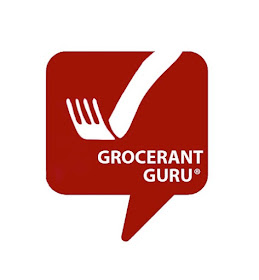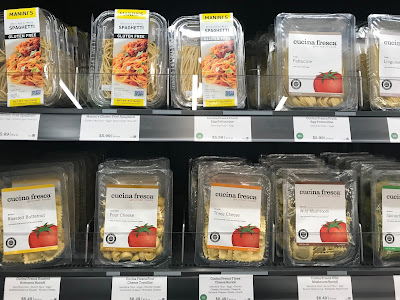Hot food hot, cold food cold that is the old adage
that has been a mainstay within the foodservice sector for over a hundred
years, and maybe longer. It is great to
see how one company elevates that standard with customer focused relevance today.
That company is Amazon. It is taking a major step in making all of
that pickup and delivery better for the planet and better for the customer as
they edify their food delivery standards according to Steven Johnson, Grocerant Guru® at Tacoma, WA based Foodservice Solutions®.
Amazon
Grocery is launching new curbside recyclable packaging that keeps
grocery items chilled and frozen during delivery. The program rolled out just
in time for Thanksgiving when customers were ordering turkey, green beans, or frosty pints of ice
cream, chilled and frozen foods from Amazon
Fresh and Whole
Foods Market will arrive insulated in packaging made from recycled paper,
permanently eliminating the need for plastic liners and bubble bag insulation.
The new packaging is also easier for customers to recycle at home.
Stephenie Landry, Vice President, Amazon
Grocery, detailed the company's latest journey to recyclable packaging
journey in a new blog post:
How would you describe the problem we
were trying to solve for customers?
We have long wanted to find a more
sustainable solution for the plastic liners and bubble bags that are often used
to insulate chilled and frozen items. The criteria for any new packaging
solution came down to five key considerations. First, and probably the most
obvious, we wanted to ensure the packaging- maintained product chill chain and
Amazon’s high bar for food safety.
The third major consideration was that
any new packaging needed to be easily recyclable—as in, customers could leave
it with the rest of their curbside recyclable material. Fourth, it also needed
to be inexpensive and scalable because we wanted to continue to ensure that Amazon’s
grocery delivery offerings were widely accessible for customers.
In October, Amazon forecast modest sales growth for the fourth quarter. The bleak holiday season outlook came as Amazon reported sales for its third quarter increased 15% to $110.8 billion, within the company’s forecast range of $106 billion to $112 billion shared at the end of the second quarter. That’s impressive growth, but profits were a different story: Net income fell to $3.2 billion and earnings per share fell to $6.12 from net income during the prior-year third quarter of $6.3 billion and earnings per share of $12.37.
Expenses rose in key areas, which CEO
Andy Jassy positioned as the company doing right by customers rather than
maximizing near-term profits. For example, fulfillment expenses increased 27.8%
to $18.5 billion, technology and content expenses increased 31% to $14.4
billion, and marketing expenses increased 47.4% to $8 billion. Customers
appreciated Amazon’s commitment, which is part of what drove the 39% growth in
AWS revenue, according to Jassy.
“It’s also driven extraordinary
investments across our businesses to satisfy customer needs. Just one example
is that we’ve nearly doubled the size of our fulfillment network since the
pandemic began,” Jassy said. “In the fourth quarter, we expect to incur several
billion dollars of additional costs in our consumer business as we manage
through labor supply shortages, increased wage costs, global supply chain
issues, and increased freight and shipping costs, all while doing whatever it
takes to minimize the impact on customers and selling partners this holiday
season.
Success does
leave clues. One clue that time and time again continues to resurface is “the
consumer is dynamic not static”. Regular
readers of this blog know that is the common refrain of Steven Johnson, Grocerant Guru® at Tacoma, WA
based Foodservice Solutions®. Our
Grocerant Guru® can help your
company edify your brand with relevance.
Call 253-759-7869 for more information.








thanks
ReplyDeletePolyester film suppliers are commonly used in grocery stores to make plastic film bags for groceries. This is because the potential for a thinner thickness can provide sufficient strength to seal well while saving material costs. Polyester film suppliers' plastic bags are generally less transparent than other plastic bags, making them more useful in applications where strict transparency is not a priority.
ReplyDeleteThis comment has been removed by the author.
ReplyDeleteGood, article, but there were a several grocery store found shortage of groceries and milk like fairlife protein shake and similar.
ReplyDelete